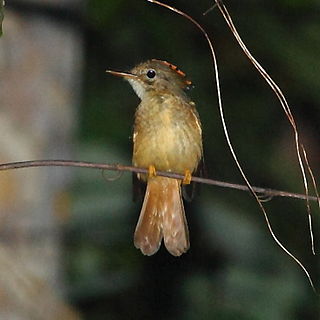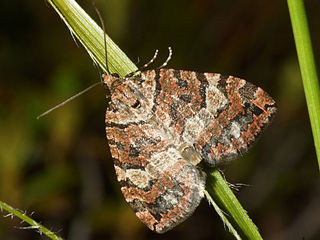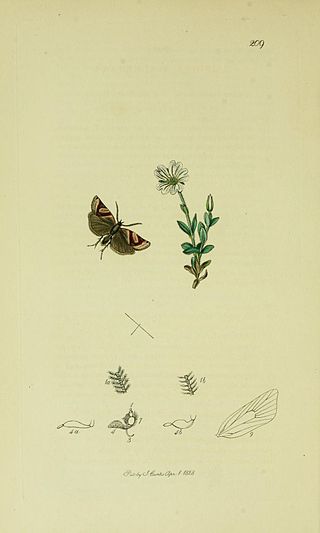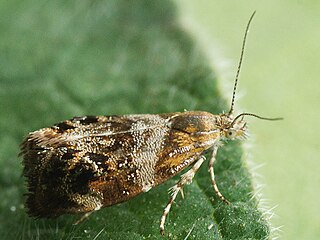
Carl Peter Thunberg, also known as Karl Peter von Thunberg, Carl Pehr Thunberg, or Carl Per Thunberg, was a Swedish naturalist and an "apostle" of Carl Linnaeus. After studying under Linnaeus at Uppsala University, he spent seven years travelling in southern Italy and Asia, collecting and describing people and animals new to European science, and observing local cultures. He has been called "the father of South African botany", "pioneer of Occidental Medicine in Japan", and the "Japanese Linnaeus".

The royal flycatchers are a genus, Onychorhynchus, of passerine birds in the family Tityridae.

Beewolves, also known as bee-hunters or bee-killer wasps, are solitary, predatory wasps, most of which prey on bees, hence their common name. The adult females dig tunnels in the ground for nesting, while the territorial males mark twigs and other objects with pheromones to claim the territory from competing males.

The European beewolf, also known as the bee-killer wasp or the bee-eating philanthus, is a solitary wasp that lives in the Western Palearctic and Afrotropics. Although the adults of the species are herbivores, the species derives its name from the behaviour of the inseminated females, who hunt Western honey bees. The female places several of its paralysed prey together with an egg in a small underground chamber, to serve as food for the wasp larvae. All members of the genus Philanthus hunt various species of bees, but P. triangulum is apparently the only one that specialises in Western honey bees.

The Chaco eagle or crowned solitary eagle, is an endangered bird of prey from eastern and central South America. Typically it is known simply as the crowned eagle which leads to potential confusion with the African Stephanoaetus coronatus. Due to its rarity, not much is known about its biology or population.

The crowned lapwing, or crowned plover, is a bird of the lapwing subfamily that occurs contiguously from the Red Sea coast of Somalia to southern and southwestern Africa. It is an adaptable and numerous species, with bold and noisy habits. It is related to the more localized black-winged and Senegal lapwings, with which it shares some plumage characteristics.

The chestnut-headed tesia is a small insectivorous songbird formerly of the "Old World warbler" family but nowadays placed in the bush warbler family (Cettiidae).

The crowned sandgrouse is a species of bird in the sandgrouse family, the Pteroclidae from North Africa and the Middle East.

The purple-crowned fairywren is a species of bird in the Australasian wren family, Maluridae. It is the largest of the eleven species in the genus Malurus and is endemic to northern Australia. The species name is derived from the Latin word cǒrōna meaning "crown", owing to the distinctive purple circle of crown feathers sported by breeding males. Genetic evidence shows that the purple-crowned fairywren is most closely related to the superb fairywren and splendid fairywren. Purple-crowned fairywrens can be distinguished from other fairywrens in northern Australia by the presence of cheek patches and the deep blue colour of their perky tails.

The northern royal flycatcher is a passerine bird in the family Tityridae according to the International Ornithological Committee (IOC). It is found in Mexico, south through most of Central America, to northwestern Colombia and far western Venezuela.

Wallace's fairywren is a species of bird in the Australasian wren family, Maluridae. It is the only species within the genus Sipodotus. It is found in New Guinea and the Aru Islands, where its natural habitat is subtropical or tropical moist lowland forests.

The Amazonian royal flycatcher is a passerine bird in the family Tityridae according to the International Ornithological Committee (IOC). It is found in throughout most of the Amazon basin in northern Bolivia, eastern Peru, eastern Ecuador, eastern Colombia, Venezuela, the Guianas, and northern and western Brazil.

Prunus tomentosa is a species of Prunus native to northern and western China, Korea, Mongolia, and possibly northern India. Common names for Prunus tomentosa include Nanjing cherry, Korean cherry, Manchu cherry, downy cherry, Shanghai cherry, Ando cherry, mountain cherry, Chinese bush cherry, and Chinese dwarf cherry.

Hydriomena furcata, the July highflyer, is a moth of the family Geometridae. The species was first described by Carl Peter Thunberg in 1784. It is found in the Holarctic ecozone.

Philedonides lunana, also known as the heath tortrix and Walker’s Lanark tortrix, is a moth of the family Tortricidae. It was first described by Carl Peter Thunberg in 1784 and is found in most of Europe.

Tebenna is a genus of moths in the family Choreutidae.

Tebenna bjerkandrella is a moth of the family Choreutidae first described by Carl Peter Thunberg in 1784. It is found from Europe, Morocco, Madeira and the Canary Islands through central Asia to Japan. It has also been recorded from South Africa.

Hedychrum rutilans is a species of cuckoo wasps. The species occurs primarily in Austria, Italy, Bulgaria, Greece, France, Poland, Portugal, Spain, Switzerland and in North Africa. The head and thorax are metallic green with red spots, while the abdomen is red. The color is more green and partially golden in the male and more extensively golden-red in the female. The body is somewhat hairy.
Philanthus pacificus is a species of wasp in the family Crabronidae. It is found from southwestern British Columbia to Baja California and Sonora.















